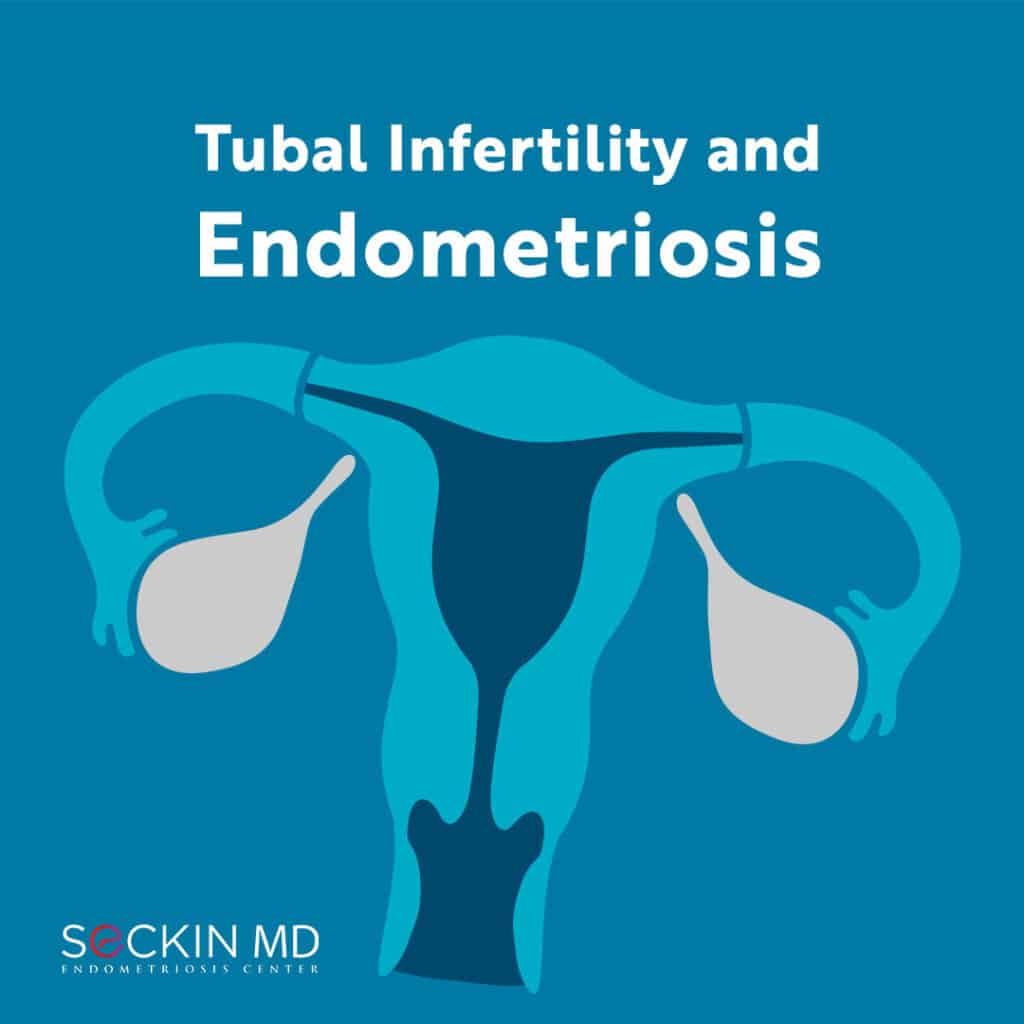Tubal Infertility and Endometriosis

Endometriosis is when lesions of endometrium (normally the inner lining of the uterus), grows outside the uterus in pelvic and extra-pelvic regions. The disease can affect the ovaries and fallopian tubes leading to tubal infertility.
What are the fallopian tubes?
The fallopian tubes, also known as uterine tubes or oviducts, are a pair of muscular tubes about 11 to 12 centimeters in length. They extend from the two corners of the uterus to each of the ovaries. Minuscule finger-like projections called fimbriae of the fallopian tubes capture the mature egg that the ovary releases. They then wave it inside the tubes so it can travel down and eventually reach the uterus after fertilization. The ampulla of the fallopian tubes is the site of fertilization between the egg and the sperm.
What causes endometriosis in the fallopian tubes?
Researchers thought that visible or macroscopic fallopian tube endometriosis occurred in 4 to 11% of all endometriosis cases. Invisible or microscopic forms of the disease, however, accounts for about 37% of the cases, they thought. However, recent studies indicate that about 12% of endometriosis cases consist of visible lesions while the percentage of invisible lesions can be as high as 42.5%.
Like endometriosis occurring anywhere else, the exact cause of endometriosis in the fallopian tubes is still not clear. However, there are several theories that explain how endometrial lesions deposit themselves in the tubes.
The commonly accepted theory is that of retrograde menstruation in which fragments of endometrial tissue go back up into the pelvic cavity via the fallopian tubes. Other theories include the development of endometrial tissue from local stem cells, which may have been carried via the circulatory system into various organs including the fallopian tubes. Inflammation, hormonal dysregulation, and an aberrant immune system are other factors researchers think may contribute to the formation of endometriosis in the fallopian tubes.
What is the result of endometriosis in the fallopian tubes?
The presence of endometriosis lesions in the fallopian tubes can drastically affect tubal function. Endometriosis lesions can block the passage of the egg preventing fertilization or the implantation of the fertilized egg inside the uterus. Endometriosis lesions can also cause scarring and adhesions in the fallopian tubes thereby affecting their anatomy.
Fallopian tube endometriosis can be silent and cause unexplained infertility. Scarring and adhesions in the fallopian tubes are also causes of recurrent early miscarriages. Fallopian tube endometriosis can also lead to ectopic pregnancies due to the distorted anatomy of the tubes. If there is scarring affecting the tubes, sometimes the embryo gets “stuck” along its path back into the uterus. Sperm may have been able to pass through a narrow opening, but the embryo could not, thus it continues to grow. This is what may potentially cause an ectopic pregnancy in cases of tubal scarring or damage.
How does tubal infertility occur?
Infertility is the inability to achieve clinical pregnancy even after 12 months of regular, unprotected intercourse in women below age 35. Infertility is often the result of ovarian, tubal, or uterine dysfunctions. Tubal defects due to endometriosis may be contributing to 6% to 71% of infertility cases.
Endometriosis can affect the beating frequency of the cilia fimbriae and muscle contractility in the fallopian tubes. Tubal endometriosis can also cause a decrease in muscular contractility and contraction frequency. This can greatly impede the transport of the egg in the tubes. As a result of impaired muscular contractility, the sperm carrying capacity of the tubes is also affected, which greatly reduces the chances of fertilization.
Most of the impact of tubal endometriosis on fertility occurs due to visible lesions. The impact and contribution of invisible lesions to symptoms are not yet clear.
How can doctors treat tubal infertility?
The effective treatment of tubal infertility due to endometriosis starts with a proper diagnosis. Laparoscopic deep excision surgery is the gold standard for both the diagnosis and treatment of tubal endometriosis. Using the technique, an experienced surgeon can isolate the lesions for histological examination after which endometriosis can be confirmed. Our patented Aqua Blue Contrast (ABC) technique enables us to identify endometriosis lesions of all kinds and effectively remove them.
Some doctors may advocate salpingectomy (removal of the fallopian tubes) to treat tubal endometriosis. At Seckin Endometriosis Center we always aim to preserve a woman’s fertility whenever possible. If both fallopian tubes are ultimately removed due to obvious blockage or damage, then in vitro fertilization would be recommended and the only way to conceive a pregnancy.
Do you suffer from infertility? Please do not hesitate to share your story by leaving a comment on our post on Facebook or Instagram.
Get a Second Opinion
Our endometriosis specialists are dedicated to providing patients with expert care. Whether you have been diagnosed or are looking to find a doctor, they are ready to help.Our office is located on 872 Fifth Avenue New York, NY 10065.
You may call us at (646) 960-3080 or have your case reviewed by clicking here.